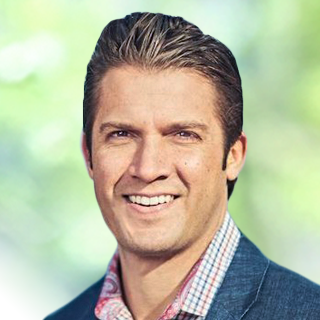Post-Pandemic HCP Access: Q&A with Dan Rizzo, Vice President of Veeva Global Business Consulting
Access to healthcare professionals (HCPs) is at 60% in the U.S. across specialties, according to new data based on 600 million annual HCP-rep interactions globally across more than 80% of the industry. Fran Pollaro chats with Dan Rizzo, vice president of Veeva global business consulting, to discuss the latest trends in post-pandemic HCP access and why it’s not the same for everybody.
Pharma Exec: The pandemic had a significant impact on HCP access, what has happened since?
Dan Rizzo: It's interesting, HCP access is much better than many companies think. For the first time through the Veeva Pulse report — we can actually show what's happening and understand how access may differ company by company. We have heard anecdotally that some think HCP access is low and has yet to return to pre-pandemic levels, but that's not what the data show. What's happening is access is selective and highly dependent on leveraging digital as part of the mix.
Dan Rizzo, Veeva

How has HCP access evolved?
The industry has historically measured HCP access by in-person meetings. But even before the pandemic pushed access to an all-time low of roughly 20%, estimates have shown a significant decline for more than a decade. Now, HCP access is back — perhaps better than some pre-pandemic estimates — but in a different way.
We’ve found that HCP access combining video and in-person channels is now averaging 60% across therapeutic areas — nearing 80% in key specialties. And engagement is increasingly virtual: of accessible HCPs, more than 50% meet with reps via a mix of in-person and video channels. There are also significant variations in HCP access by specialty. In the U.S., the specialties with the lowest access are internal medicine, neurology, and psychiatry, and the highest levels are in dermatology, diabetes, and immunology.
Is access the same for everyone and how can teams best deal with any constraints you're seeing in the space?
Having a clear understanding of reach, channel preference, and effectiveness is even more critical today, as half of accessible HCPs limit their engagement to three companies or fewer. For example, most oncologists meet with three or fewer companies, and 30% of psychiatrists limit access to just one. Field teams need to understand whether HCPs are truly inaccessible or restricting their access to a select few companies. In doing so, they can more effectively tailor their field force strategy and channel mix to reach HCPs when and how they want. This approach ultimately elevates the HCP-rep relationship, creating more cross-channel engagements that drive better sales outcomes.
It shows that you can maximize field productivity planning, reinforce the importance of content usage, and use video to increase meetings between in-person discussions to drive new treatment starts
How have these changes in HCP access affected the engagement channel mix?
The shift in HCP access to blended virtual and in-person preferences underscores the impact digital continues to have on HCP relationships. According to our data, 78% of accessible oncologists engage via a mix of in-person and video versus in-person alone — a wider gap than in any other specialty. Omnichannel capabilities like video can be effective when combined with in-person tactics. And companies with the highest level of access to HCPs use video as an additive channel.
Video has a three-times greater promotional response when added between in-person meetings and increases in-person meeting frequency. For example, oncologists who meet with reps in-person only average 4.5 meetings per month, while oncologists who meet via a mix of in-person and video average 11 meetings per month.
We know some companies are better at reaching HCPs— what makes those that do it better more effective?
There are wide gaps in HCP reach — defined as a company’s ability to engage an accessible HCP either in person or through video — between leading companies and the rest of the industry. And some field forces are more efficient than others, so the traditional “more boots on the ground” approach is no longer the sole solution to drive greater reach. The real question is, what are those other ways they can add value to the HCP relationship?
In fact, field teams with the highest impact are digitally-enabled and use their time with HCPs more wisely. We’ve seen in the data that the most commercially successful field teams use their access more effectively than lagging companies, even when normalized for field force size and reach. It comes down to implementing the right behaviors — engaging HCPs through a mix of video and in-person and optimizing that time with HCPs using the right content to make communications more effective. These teams host up to 40% more meetings, use content nearly five times as much, and drive up to 80% more new patient starts.
What's your advice for companies in light of these trends?
As HCP access continues to shift, data-driven insights can help uncover efficiency gaps across teams and broaden channel strategies to connect with HCPs. Companies need to be thoughtful about how they’re adding value to the conversation and which channels customers prefer. Then, once they have access, use the right resources and means to strengthen that relationship — ultimately, opening the door even wider.
The Misinformation Maze: Navigating Public Health in the Digital Age
March 11th 2025Jennifer Butler, chief commercial officer of Pleio, discusses misinformation's threat to public health, where patients are turning for trustworthy health information, the industry's pivot to peer-to-patient strategies to educate patients, and more.
Navigating Distrust: Pharma in the Age of Social Media
February 18th 2025Ian Baer, Founder and CEO of Sooth, discusses how the growing distrust in social media will impact industry marketing strategies and the relationships between pharmaceutical companies and the patients they aim to serve. He also explains dark social, how to combat misinformation, closing the trust gap, and more.